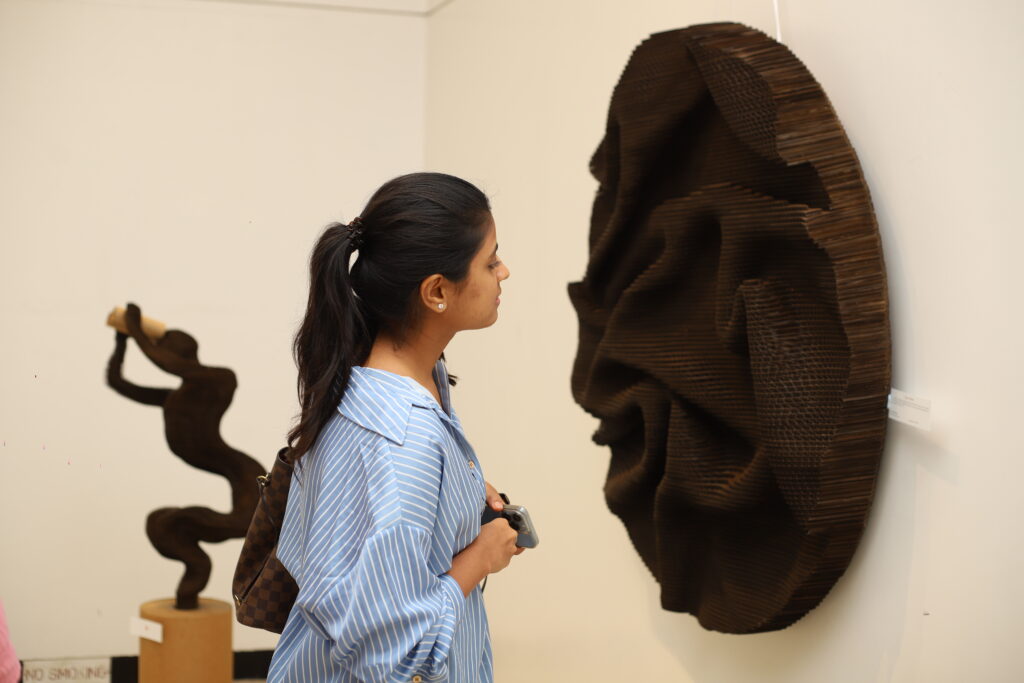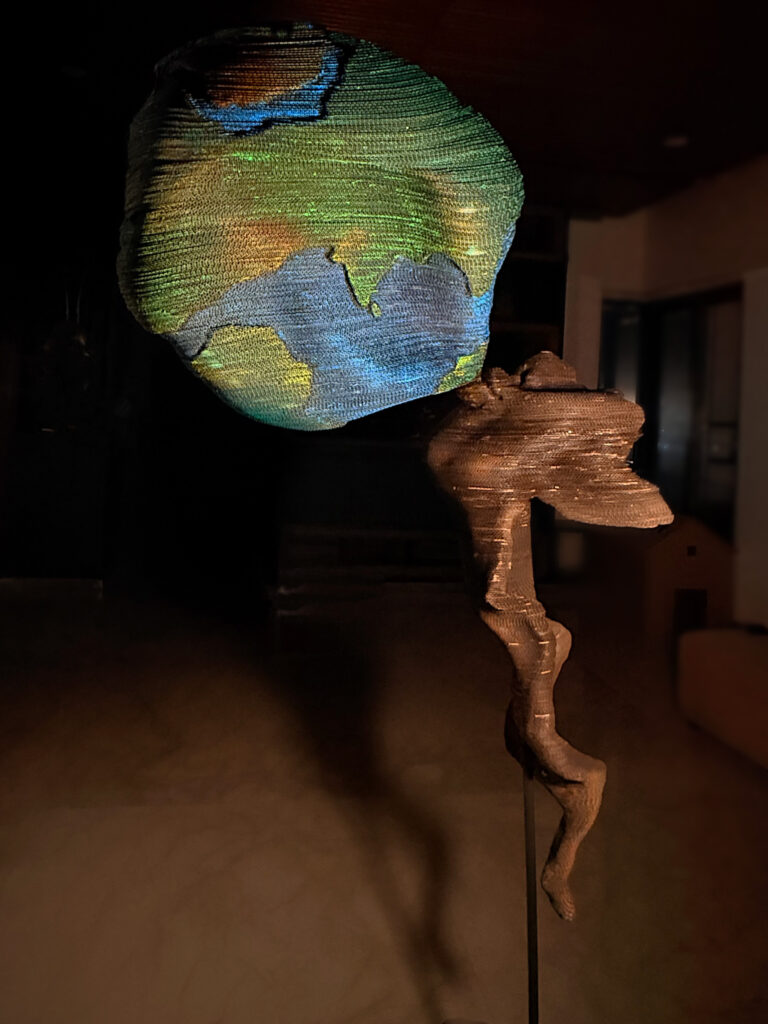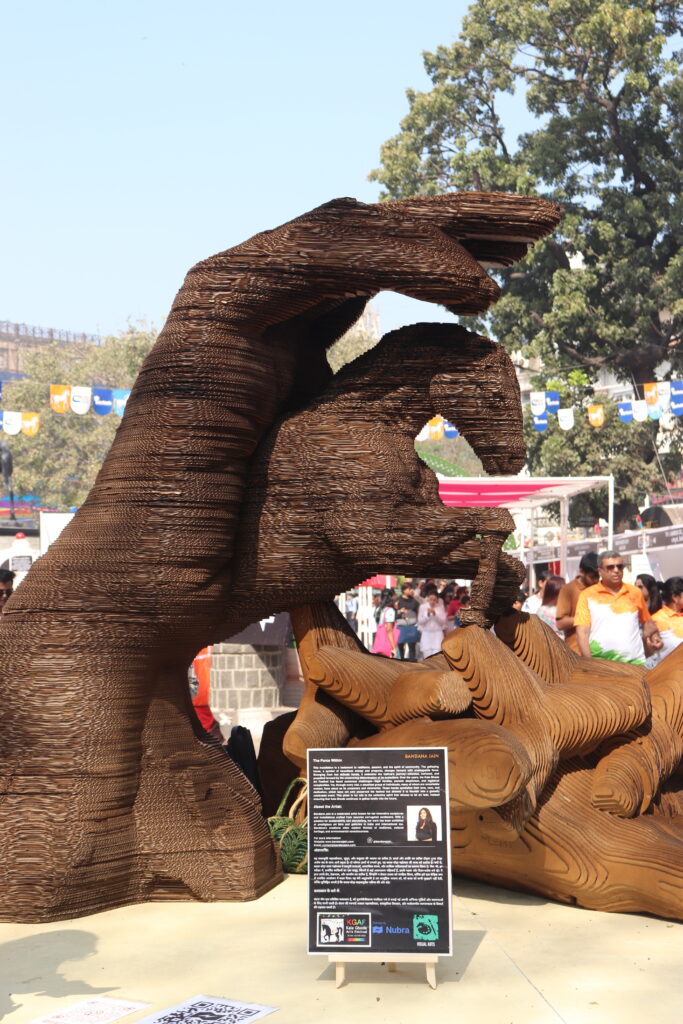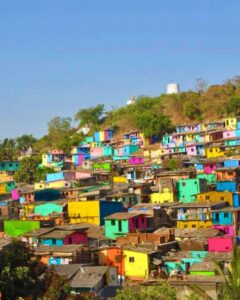How storytelling through art creates lasting visibility for your brand’s purpose.
Art holds the power to move us deeply- it can stir emotions, provoke thought, and even bring us to a standstill. It reshapes mindsets, offering new ways to see the world. Through creative interpretation, art can transcend time, transporting us to different eras and imagined futures. It inspires, and at times, it warns—forecasting societal shifts before they unfold. Subtle yet powerful, gentle yet piercing—that’s the transformative power of art. As an artist, I live for that moment when I see someone gets. That raw connection. Over the years, I’ve come to realize that art isn’t just about beauty or aesthetics. It’s a language. A deeply emotional, intuitive, and universal language that can touch hearts long before words do.

I’ve seen firsthand how that language can be used not only to evoke emotions but to tell stories—stories of our planet, our people, our purpose. That’s why I believe art should have a more significant role to play in CSR and ESG efforts. Because when corporate responsibility meets creative expression, something truly transformative happens.
Case Study: TCS and The Earth Station
A few months back, I was invited by Tata Consultancy Services (TCS) to create something meaningful as part of their ‘Inflate the Earth’ campaign. That’s how The Earth Station was born. This wasn’t just an installation—it was a living, breathing metaphor. Crafted from recycled corrugated cardboard, it stood as one of the highlights at TCS Hiranandani campus as a symbol of both fragility and hope. At its core was a deflated globe, cradled gently by a figure blowing air into it. A metaphor for how individual actions—small, consistent, conscious—can breathe life back into our planet.
The Earth Station reflects the reality we live in: a world strained by consumerism and carelessness. But it also whispered of possibility. Through design, space, and symbolism, it invited employees to pause and reflect. The dome-like structure offered a meditative experience—quiet, grounding, and personal. It didn’t lecture or overwhelm. It simply reminded: the Earth needs us, and our actions matter.

Case Study: Kala Ghoda and The Force Within

Not long before that, I created The Force Within for the Kala Ghoda Arts Festival 2025—a tribute to human resilience. At the centre was a horse—uncontainable and full of life—emerging from two open hands. It represented the untamed strength of communities when supported and seen. Again, made from corrugated cardboard, a material often discarded but full of strength when shaped with care. The piece wasn’t passive. It invited engagement. We also urged people to take a pledge—towards sustainability, equity, or any cause they believed in. Hundreds did. And just like that, the art moved from being an object to becoming an experience. A shared responsibility. A silent revolution.
This particular installation was created as part of a CSR collaboration with Nubra, an emerging trading platform that has aligned itself with sustainability and social upliftment. Known for their Plant a Tree campaign, Nubra saw this partnership as an opportunity to extend their environmental commitment into the cultural space. By supporting The Force Within, Nubra brought their values to life—showing how corporate responsibility can power creative action and spark collective consciousness.
And that’s the truth. CSR reports may satisfy compliance checklists, but they don’t always move people. Art does.

Let’s talk closer to home. You’ve probably heard of Rouble Nagi’s Misaal Mumbai project. What began as an effort to paint slum walls turned into a city-wide movement. Over 150,000 homes became vibrant canvases. But it wasn’t just about colour—it was about dignity. Children began attending school more regularly. Community morale improved. Public health saw a shift. Art changed behaviour because it changed how people felt about their surroundings.
Then there’s the Aravani Art Project, where trans and non-binary individuals lead mural projects across India. These aren’t just paintings—they’re declarations of identity, pride, and inclusion. Through public art, they’ve reclaimed space and visibility—quietly but powerfully.

Large organizations are waking up to this. JSW Foundation, for instance, has commissioned public art and restoration initiatives that fuse culture and community. And Asian Paints has supported mural and beautification drives in underprivileged neighborhood, using art to bring dignity and transformation. These are not fringe projects—they’re front-facing commitments that build emotional capital and community trust.
Art is not a line item in your CSR budget—it’s a multiplier.
I’ve collaborated with several corporate houses who initially saw art as “decor.” But the conversations we’re having now are different. More intentional. More ambitious. We’ve been exploring how art can move beyond aesthetics—into advocacy. Imagine a company who wants to engage their internal team on environmental issues, instead of a seminar, they co-create installations using a company’s own discarded materials—turning packaging waste or obsolete assets into a statement piece. Their waste becomes a story. A mirror. A message. Imagine the impact when employees see their own by products transformed into art that speaks of sustainability, values, and vision. That’s the kind of shift we aim to spark.
Imagine this: a corporate campaign on water conservation brought alive by a travelling sculpture made from reclaimed water pipes—each one telling stories of drought-affected communities. Or a 15-foot sculpture, built entirely from your brand’s post-consumer waste, standing at your headquarters or in a public space, reflecting your commitment to sustainability.
- It’s shareable, photogenic, and public-facing
- It makes your message tangible
- It builds empathy and invites interaction
What if your ESG goals turn into stories people could walk through, feel, and remember?
Want to communicate your carbon reduction targets? Imagine a kinetic sculpture that evolves as your emissions shrink—an artwork that mirrors change in real time.Trying to engage communities in your social equity goals? Why not co-create public art with them—offering ownership, not just outreach.
Governance isn’t just about compliance. It’s about transparency, trust, and truth-telling. What if your annual ESG summary comes alive through a visual timeline, experienced by every visitor and employee?
Why This Matters:
- Raw. Real. Unignorable.
- Signals commitment, not convenience.
- Elevates CSR & ESG to have a social dialogue.
- Translates strategy into story.
- Makes abstract metrics human and memorable.